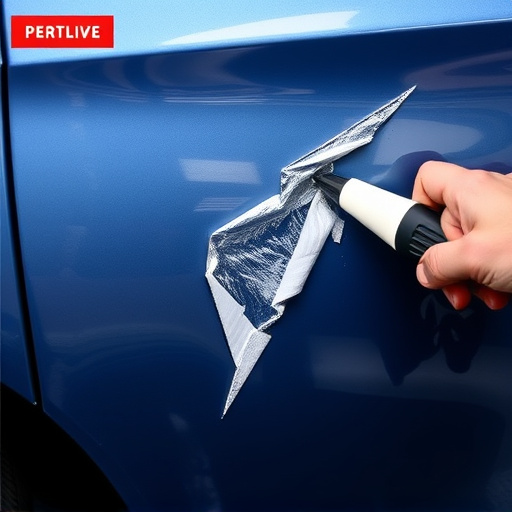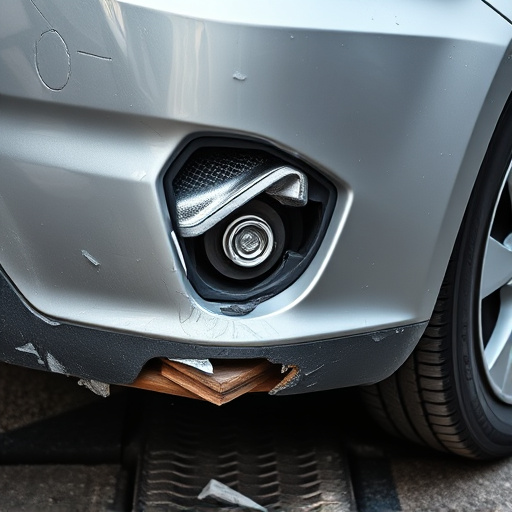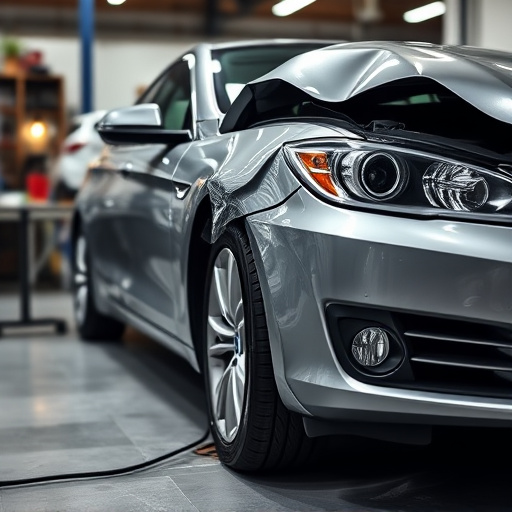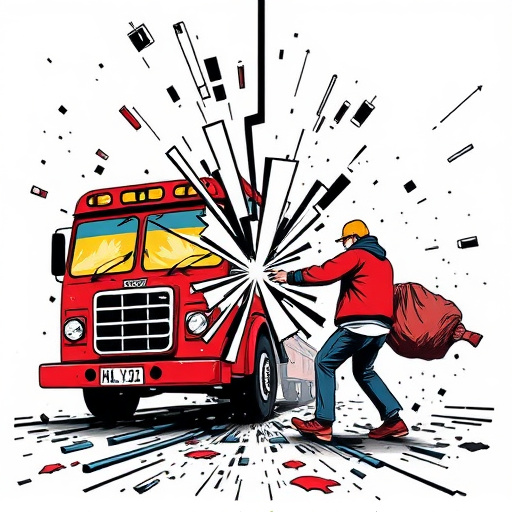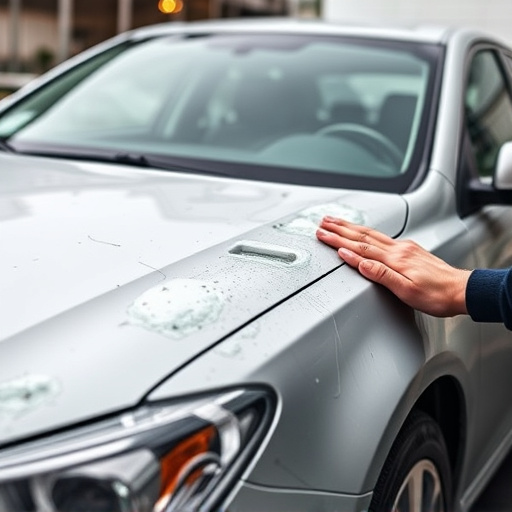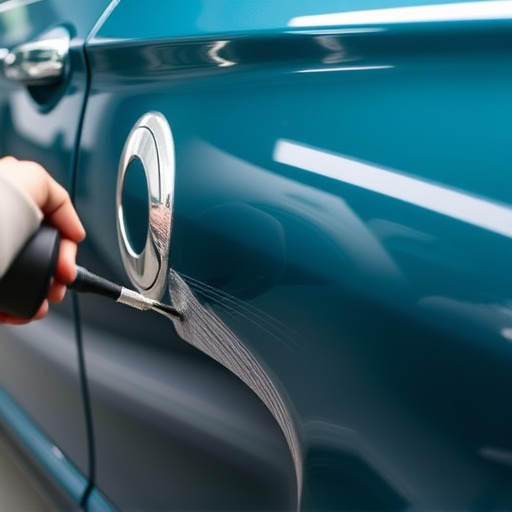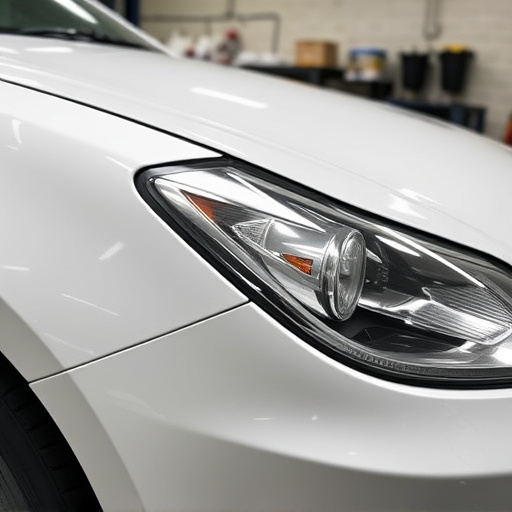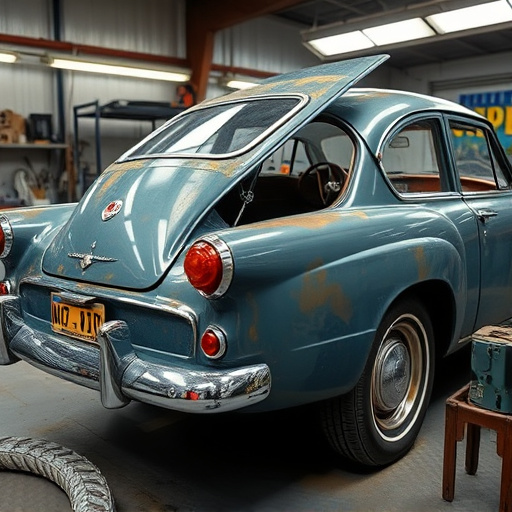Insurance is vital for auto body collision repair industry, facilitating specialized services and timely repairs through partnerships with insurance providers. Policyholders file claims, adjusters assess, and approved shops use skilled technicians and equipment to restore vehicles to pre-accident condition, with insurance covering costs. This process benefits both policyholders and repair shops by offering efficient, quality auto body collision repair services while navigating complex claims and regulations.
In today’s digital era, understanding the intricate relationship between insurance and auto body collision repair shops is paramount. This article delves into the multifaceted dynamics of this partnership, focusing on how insurance facilitates seamless auto body collision repair services. We explore the process, benefits, and challenges, providing insights that help both insurers and auto body shops navigate this complex landscape effectively. By understanding these aspects, stakeholders can foster a robust ecosystem for efficient and quality auto body collision repair.
- Understanding the Role of Insurance in Auto Body Collision Repair
- The Process: How Insurance Facilitates Collision Repair Services
- Benefits and Challenges: Insurance's Impact on Auto Body Shops
Understanding the Role of Insurance in Auto Body Collision Repair

Insurance plays a pivotal role in facilitating seamless operations within the auto body collision repair industry. When a vehicle incurs damage due to an accident, insurance companies step in to assess the extent of the damage and cover the costs associated with repairs. This process ensures that vehicle owners can restore their vehicles to their pre-accident condition without incurring substantial out-of-pocket expenses.
In the realm of auto body collision repair, insurance provides financial backing for specialized services such as luxury vehicle repair, automotive body work, and vehicle bodywork restoration. Reputable repair shops collaborate closely with insurance providers to streamline the claims process, ensuring that customers receive timely and accurate repairs while minimizing potential delays or disputes. This partnership fosters a robust ecosystem where quality repairs are accessible, and drivers can focus on getting back on the road safely and confidently.
The Process: How Insurance Facilitates Collision Repair Services

When a vehicle experiences a collision, the process of auto body collision repair begins. Insurance plays a pivotal role in facilitating this process, ensuring that drivers receive the necessary services to restore their vehicles to pre-accident condition. Here’s how it works: first, the policyholder files an insurance claim with their provider after the incident. The insurance company then assigns an adjuster who assesses the damage to the vehicle, providing an estimate for the repair costs. This estimation is crucial in determining the course of action and the financial responsibility involved.
Once approved, the policyholder chooses a reputable car body shop from their network of preferred collision repair services. The chosen auto body collision repair shop then begins the restoration process, using specialized equipment and skilled technicians to fix any damaged components. Throughout this journey, insurance acts as a bridge, covering the costs and ensuring smooth communication between all parties involved. This streamlined approach benefits both policyholders and collision repair shops, offering efficient and quality Mercedes Benz collision repair or services for any other vehicle make, without the added burden of extensive financial stress.
Benefits and Challenges: Insurance's Impact on Auto Body Shops

Insurance plays a pivotal role in shaping the landscape of auto body collision repair shops, offering both significant benefits and unique challenges. One of the primary advantages is financial stability; insurance provides a safety net for shops, ensuring they can cover the costs of repairs, especially when dealing with complex or expensive vehicle paint repairs. This coverage encourages businesses to take on a wider range of collision repair services, catering to diverse customer needs.
However, navigating insurance claims and policies can be intricate. Shops must dedicate resources to understanding and managing these processes, which may divert attention from their core car repair services. Additionally, the constant evolution of insurance regulations adds another layer of complexity, requiring businesses to stay updated to ensure they provide the best collision repair services while adhering to legal requirements.
Insurance plays a pivotal role in streamlining the process of auto body collision repair, ensuring that vehicles are restored to pre-accident condition efficiently. By facilitating communication and payment between customers, insurance providers, and collision shops, insurance helps reduce stress and financial burden for all parties involved. However, auto body shops face challenges such as navigating complex claim procedures and managing varying insurance policies. Staying informed about the intricacies of insurance coverage and maintaining strong relationships with insurers are key to thriving in this industry, ultimately benefiting customers through high-quality, cost-effective collision repair services.
